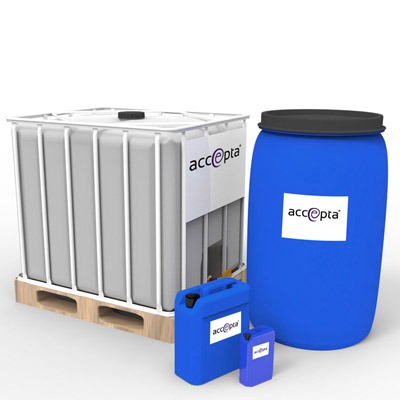How to Attain Optimum Foam Control for Improved Manufacturing Effectiveness
How to Attain Optimum Foam Control for Improved Manufacturing Effectiveness
Blog Article
A Comprehensive Overview to Implementing Foam Control Solutions in Your Procedures
Efficient foam control is a critical element of operational effectiveness that often goes overlooked. Recognizing the complexities of foam generation can substantially influence both efficiency and product quality. By taking a look at essential aspects such as application compatibility and employees training, companies can enhance their foam administration initiatives.
Understanding Foam Difficulties
Foam obstacles are a considerable worry across numerous markets, affecting operational performance and product quality. The formation of too much foam can impede procedures such as mixing, transport, and storage, resulting in raised downtime and waste. In markets like food and beverage, drugs, and petrochemicals, foam can interfere with assembly line, causing product inconsistencies and contamination risks.
Moreover, foam can obstruct equipment functionality, leading to pricey repair services and upkeep. In wastewater therapy, foam can interfere with clarifier operations, resulting in lower treatment effectiveness and regulative compliance concerns.
Recognizing the underlying reasons for foam generation is vital for effective management. Variables such as surfactants, temperature level changes, and frustration levels can all add to foam production. Identifying these elements enables markets to apply targeted techniques that lessen foam development while maintaining item integrity.
Kinds of Foam Control Solutions

Mechanical options involve the usage of tools such as foam skimmers or defoamers. Chemical remedies, on the other hand, include the application of defoaming representatives-- substances that interfere with the foam structure, leading to its collapse. Foam Control.
Lastly, operational approaches concentrate on procedure modifications. This might include modifying devices criteria, such as temperature and stress, or transforming the flow prices of fluids to lessen foam generation. In addition, implementing excellent housekeeping methods can also minimize foam development by reducing impurities that add to foam security.
Selecting the appropriate foam control service includes analyzing the certain demands of the operation, including the sort of procedure, the characteristics of the products involved, and safety and security considerations.
Choosing the Right Products
Selecting the best foam control items requires a comprehensive understanding of the particular application and its special obstacles. Elements such as the kind of foam, the atmosphere in which it happens, and the preferred result all play crucial functions in product option. Foam Control. For circumstances, in industries like food handling, it is crucial to choose food-grade defoamers that comply with safety guidelines while properly handling foam.
Additionally, consider the viscosity of the liquid where the foam issue exists. Some items are developed for low-viscosity applications, while others are tailored for thicker liquids. Compatibility with existing processes is another essential element; the chosen foam control agents ought to incorporate flawlessly without disrupting overall operations.
Another critical factor is the technique of application. Some items may call for dilution, while others can be applied straight. Analyzing the ease of use and the needed dose can offer insights into the item's effectiveness and cost-effectiveness.
Application Methods
Effective application methods for foam control services call for a systematic method that aligns why not try here product option with functional requirements. The very first action includes a comprehensive analysis of the processes where foam takes place, recognizing details areas that necessitate treatment. By engaging cross-functional teams, including production, quality, and design guarantee, companies can gather insights that notify the option of one of the most reliable foam control products.
Following, it is vital to develop clear goals for foam decrease, guaranteeing that these objectives are quantifiable and attainable. This may involve defining acceptable foam levels and the timelines for application. Training workers on the residential properties and application approaches of selected foam control representatives is equally crucial, as proper usage is vital for ideal results.
Furthermore, incorporating foam control remedies right into existing workflows needs mindful planning. Eventually, a well-structured strategy will improve operational efficiency while effectively handling foam-related difficulties.
Monitoring and Reviewing Efficiency
Monitoring and evaluating the effectiveness of foam control options is essential for guaranteeing that applied approaches yield the wanted outcomes. This procedure entails organized data collection and analysis to analyze the performance of foam control agents and techniques. Secret performance indications (KPIs) must be developed before application, enabling for a clear standard versus which to gauge progress.

Evaluating effectiveness likewise needs routine reviews of foam control treatments and agent efficiency. This can be accomplished through sampling and screening, permitting operators to establish if present solutions are satisfying operational demands. It is crucial to solicit comments from group members that interact with these systems daily, as their insights can reveal operational subtleties that measurable data might neglect.

Eventually, an organized monitoring and examination structure aids determine necessary adjustments, making sure that foam control solutions continue to be reliable, inexpensive, and straightened with organizational objectives.
Final Thought
In conclusion, efficient foam control solutions are crucial for maximizing functional efficiency and keeping item top quality. A complete understanding of foam challenges, incorporated with the selection of appropriate items and implementation strategies, helps with the successful monitoring of foam generation.
Applying good housekeeping methods can additionally mitigate foam development by minimizing contaminants that add to foam security.
Choosing the best foam control items requires a thorough understanding of the certain application and its special obstacles (Foam Control).Successful application strategies for foam control options call for an organized strategy that why not try this out straightens product selection with operational needs.In final thought, efficient foam control solutions are essential for straight from the source optimizing operational performance and keeping product quality. A thorough understanding of foam challenges, incorporated with the option of suitable products and application techniques, promotes the successful monitoring of foam generation
Report this page